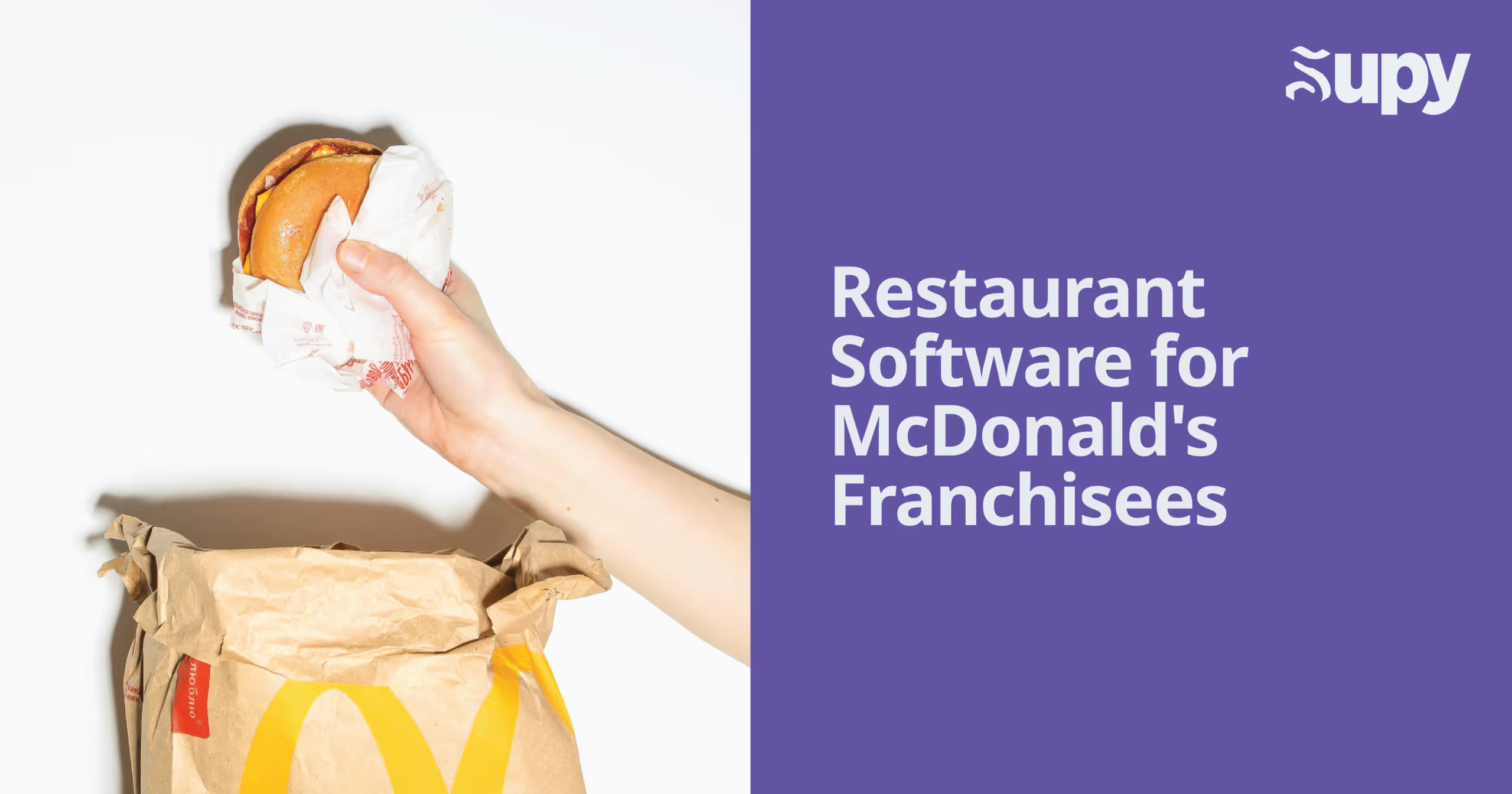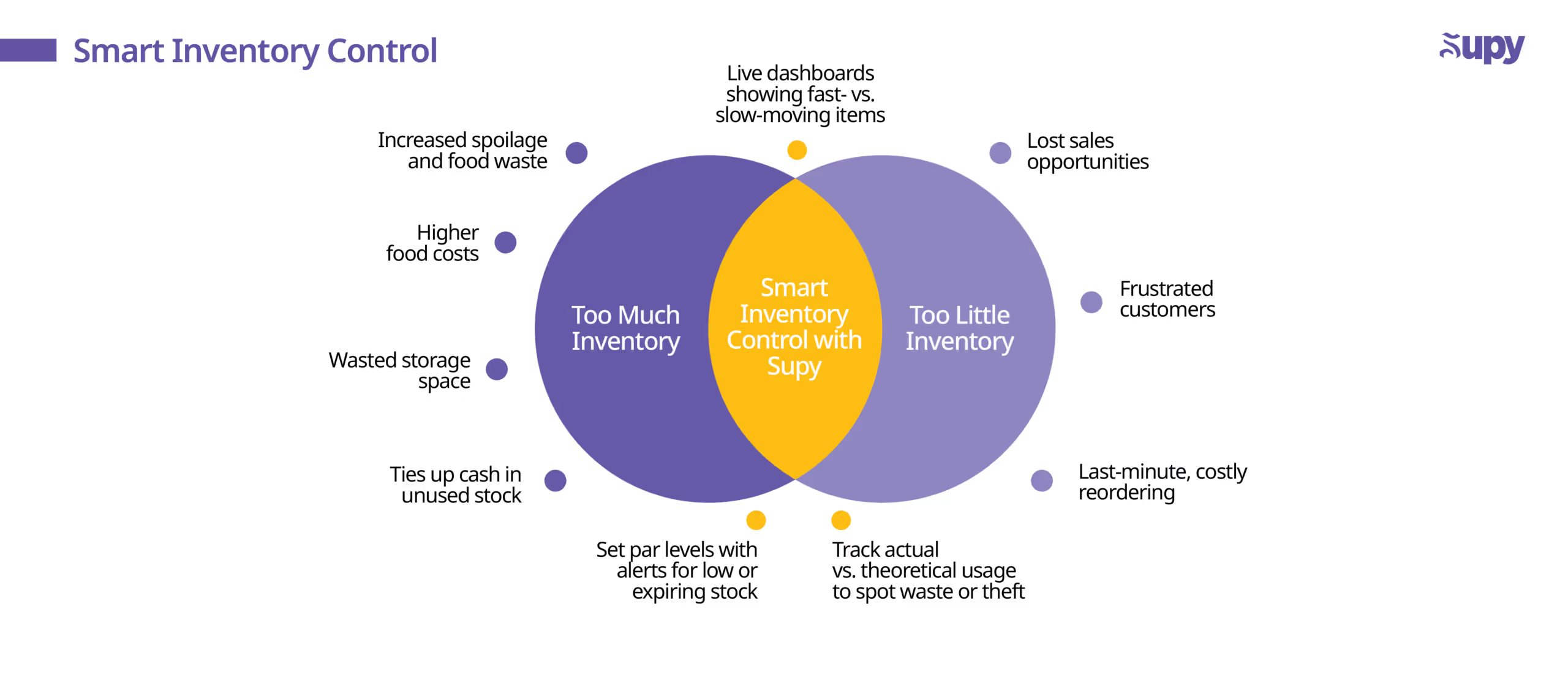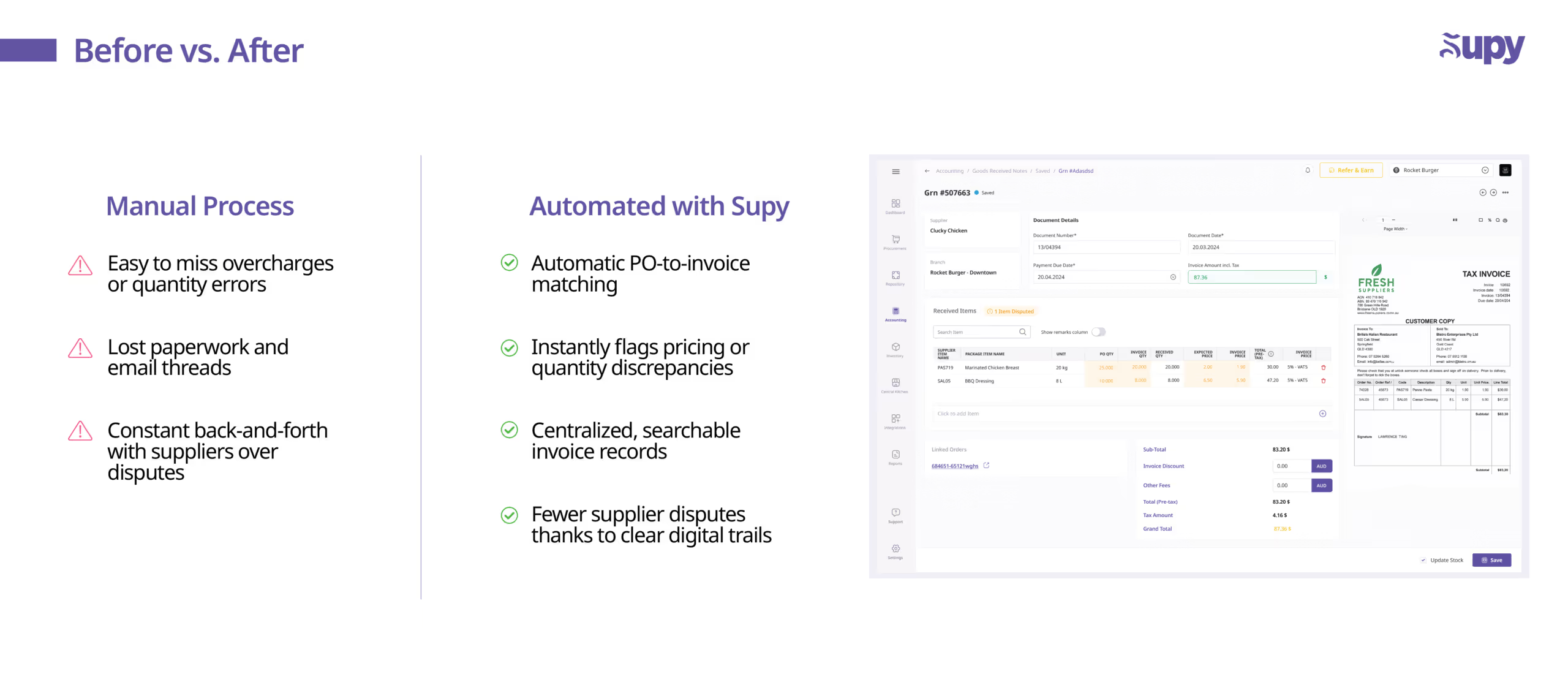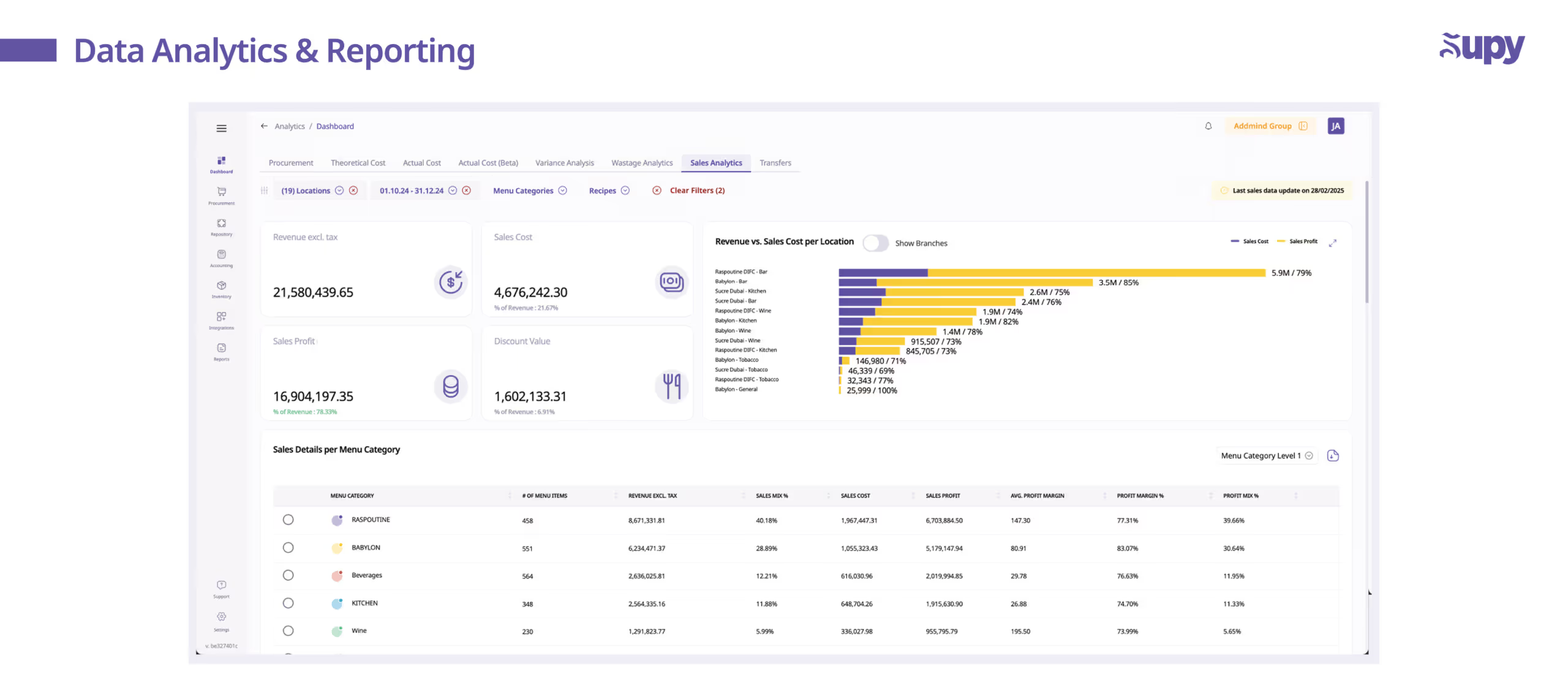Essential Restaurant Software Solutions for McDonald's Franchisees

In some ways, owning a McDonald’s franchise makes business in the food service industry easy – there’s built-in brand recognition and customer trust ready for the taking. Yet behind the scenes, managing a franchise is anything but simple. Between inventory tracking, staff scheduling, and financial management, franchise owners juggle a wide range of responsibilities every day. And without the right systems in place, even small inefficiencies can quickly start to drain your pocket.
That’s where smart restaurant software solutions come in.
- McDonald’s POS Integration
- McDonald’s Inventory Management
- McDonald’s Accounting Software
- Data Analytics & Reporting for McDonald’s Franchises
- Payroll & Labor Management for McDonald’s Franchises
- Support & Training for McDonald’s Franchisees
- System Integration & Scalability for McDonald’s Franchises
- Conclusion
- About Supy
With razor-thin business margins and a high volume of transactions, automating your McDonald’s franchise can make a world of difference to your operations. For instance, if you dig a little deeper into the world of franchising, you’ll notice that the most successful organizations rely on heavily tailored technology and tools that connect critical areas of their operations in real-time.
But which software functions actually matter? And how do they all come together to keep your profit margins high?
In this article, we’ll go over some of the specific tools many McDonald’s franchise owners use and explain how each contributes to a more efficient and scalable operation.
Read on to learn more on how you can make smarter decisions, save time, and boost company profitability.
1. McDonald’s POS Integration
At the heart of every successful McDonald’s franchise is the POS system, where each sale and transaction begins. It’s essential for this system to integrate directly into the rest of your software stack, otherwise valuable data is bound to get stuck in a silo.
Without POS integration, franchise owners are stuck manually entering sales data into their inventory, payroll, and reporting dashboards. The natural result of this is wasted time, an increased risk of human error, and delayed access to the data you need to make decisions. Imagine trying to forecast next week’s inventory while you’re still entering sales from three days ago into your system!
A smart McDonald’s franchisee would look for software solutions that offer real-time synchronization, robust API connections, and full support for complex menu structures (including combo meals and limited-time offers). These features allow sales data to flow easily and effortlessly across your inventory, labor, and financial systems, thus making the entire operation much simpler, leading to higher cost savings and other benefits.
2. McDonald’s Inventory Management

Inventory mismanagement is one of the fastest ways to lose money in the restaurant industry. For McDonald’s restaurants that manage large volumes of inventory across high-traffic locations, there’s no question about it: smart inventory control is essential.
With the right franchise software, you should be able to maintain just the right amount of stock: not so much that items spoil on the shelf, and not so little that you’re forced to 86 a popular menu item. Look for systems like Supy's that allow you to track your actual vs. theoretical usage, so you can identify waste or theft before it becomes a trend. This should allow you to keep your food costs low while keeping gross sales high.
Another thing to consider is whether your system automatically updates its inventory when a sale is made or a delivery is received. If not, you may still be stuck doing manual data entry—and missing real-time insights. The best solution for this is to set par levels for your stock in advance, thus allowing you to receive alerts when valuable ingredients are running low or about to expire. With Supy, you can even go one step further, with live dashboards that show you what items are moving fast versus what’s sitting idle.
3. McDonald’s Accounting Software

In a high-volume franchise like McDonald's, manually handling invoices and settlements is a surefire way to invite errors, delays, and lost paperwork. Franchise owners need accounting software that can automatically match purchase orders (POs) to incoming invoices.
This kind of automation instantly flags pricing or quantity discrepancies, helping operators catch overcharges before they become costly mistakes. Ask yourself: Can your current system tell you if you were overcharged last week? If not, you're working too hard for too little clarity.
A smart solution—like the accounting tools used in Supy’s restaurant software—centralizes all invoice data and makes it searchable, filterable, and exportable. No more digging through folders or emails. It also reduces the need to go back-and-forth with your suppliers, since disputes are easier to prove with clear digital records.
4. Data Analytics & Reporting for McDonald’s Franchises

It’s easy to get overloaded with data, especially if you’re a franchise owner juggling multiple locations. Between your POS systems, labor schedules, inventory counts, and supplier invoices, it’s easy to get buried under the numbers without truly understanding what any of it means. That’s where the right McDonalds franchise software can make all the difference.
Instead of generating separate reports from separate systems, look for a platform that pulls all of your data onto a single unified dashboard. Can you see how sales today compare to sales last week? Are you alerted when labor costs spike above your target? How about weaselling out a quietly underperforming item on your menu before it starts becoming a problem?
Good software doesn’t just collect data—it interprets it. With Supy’s smart analytics and reporting feature, you can detect inefficiencies early, track performance trends, and even forecast future demand based on historical patterns.
Franchisees who use platforms like Supy gain the confidence to manage their business proactively, not reactively. They don’t wait for a weekly report to show a dip—they see it happening in real time and act fast.
That’s the power of connected, intuitive analytics.
5. Payroll & Labor Management for McDonald’s Franchises
A quick rule of thumb in the restaurant business is to keep your labour costs between 25-35% of your total sales, making labour costs the single most controllable variable of your restaurant operations. Yet many franchisees still rely on outdated methods to manage payroll, like manual scheduling or spreadsheets that can lead to overstaffed shifts and costly surprises.
With dedicated franchise software, franchise owners can set up a smart labor management system that forecasts your staffing needs according to your projected sales. This allows you to prevent both understaffing scenarios as well as unnecessary scheduled overtime. Smart franchise management software can also simplify your restaurant’s compliance with local labor laws, automate your timesheets, and flag costly scheduling conflicts before they happen.
Ask yourself: Can your current system connect labor data with your sales trends and operational targets? If not, you're probably missing opportunities to boost productivity and trim your expenses.
A good restaurant management platform is designed to make life easier for your team. Many such platforms now allow employees to swap shifts, view their schedules, and clock in/out via a mobile app. As the owner or manager of this franchise, that means fewer surprises on payroll day and a tighter handle on labor performance across each of your locations.
6. Support & Training for McDonald’s Franchisees
It’s important to remember, however, that even the most powerful McDonald’s franchise software won’t deliver results if your team doesn’t know how to use it. That’s why support and training are also an important foundation of your success.
While shopping for software, consider what happens after you sign the contract. Does your software company offer a generic help center, or will someone walk your team through the setup process, answer your questions, and continue to check in with you after the launch?
It’s a good idea to look for vendors that offer:
- Hands-on onboarding sessions tailored to your franchise’s needs
- Ongoing training for new features
- Fast, responsive support via chat, phone, or email
- Clear documentation and how-to guides your team can actually use
With Supy, franchise teams are guaranteed personalized onboarding sessions, meaning we help you configure the system around your workflows—not the other way around. Because when your staff feels confident in the tools they’re using, the result is smoother operations, faster onboarding for new hires, and fewer costly errors.
7. System Integration & Scalability for McDonald’s Franchises
One last point of note for franchisees shopping around for restaurant management software: make sure every restaurant tool—from inventory trackers to payroll processors—can “talk” to each other. If each of your tools works well in isolation but cannot communicate with other restaurant systems, you’ll find yourself stuck with manual work, lost data, and inefficient workflows. For McDonald’s franchisees seeking out speed and accuracy, seamless system integration is absolutely non-negotiable.
Think about it. If you can't add a new supplier or open another store without rebuilding my entire system, you’re going to face serious delays as your business grows.
That’s why leading McDonald’s franchise software solutions are built with integration and scalability in mind. Look for cloud-based platforms with modular architecture—this means you can plug in new tools or locations as needed, without having to reconfigure everything from scratch.
With Supy’s restaurant management solutions, everything from your supplier data to your daily operations is centrally accessible, meaning less duplication and fewer errors. When your software grows with you, adding locations becomes a matter of clicks—not chaos.
8. Conclusion
At the end of the day, McDonald's franchisees face enough challenges managing their restaurants without adding complexity to their operations.
By using integrated tools for payroll, inventory, and reporting, McDonald’s franchisees can eliminate manual processes and gain a clearer picture of their operations. This simplifies everything from employee scheduling to stock management, enabling smoother workflows and reducing costly errors.
Whether you manage five stores or fifty, modern software systems can deliver the clarity you need to optimize operations and boost your margins.
Looking for a smarter way to run your restaurant? Explore how Supy’s restaurant software helps franchise owners take control of inventory, purchasing, and kitchen efficiency—without the headache. Sign up for our newsletter or book a free demo today to stay updated on the latest trends!
9. About Supy
Supy is the best restaurant inventory management software platform tailored for multi-branch restaurants and franchises. With features like real-time inventory tracking, smart procurement systems, and advanced analytics, Supy helps restaurants manage their various demands effectively and provides the tools restaurants need to thrive in a dynamic industry.
For the latest expert insights, download Supy’s ebook: The Ultimate Guide to Reducing Food Costs in Multi-Branch & Enterprise Restaurants.







